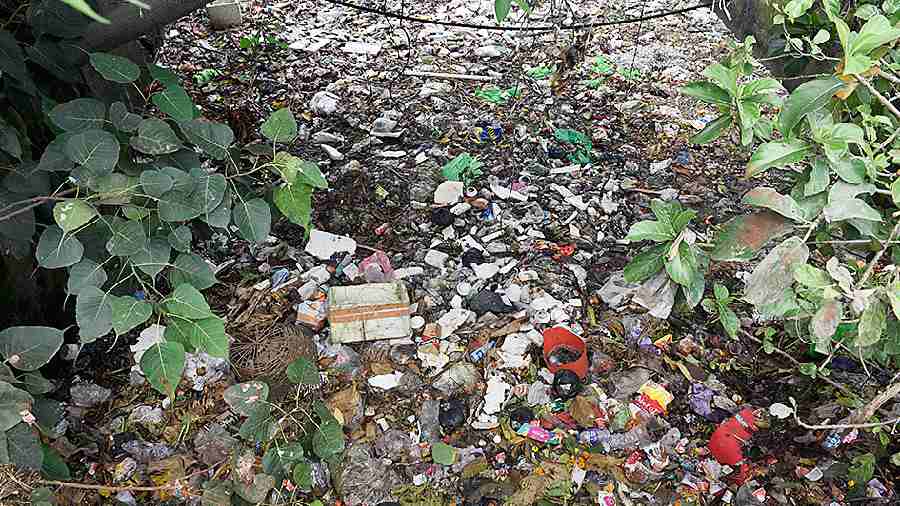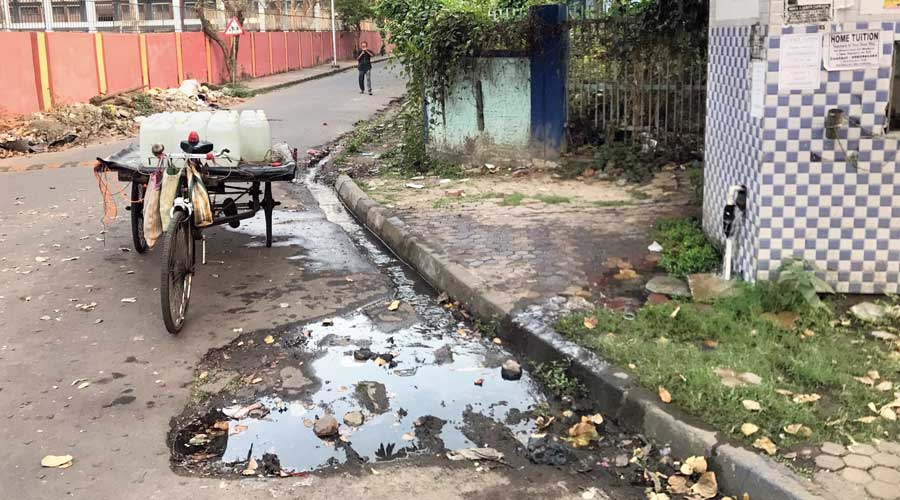A neighbourhood that lost a resident to dengue on Monday, mirrors many ills that are plaguing the city during the mosquito season.
A Tuesday visit by The Telegraph to Ward 115 of the Kolkata Municipal Corporation revealed open areas that had turned into garbage dumps.
Residents alleged that the civic body had not taken adequate measures to prevent mosquito breeding.
Banerjee Para and Chatterjee Bagan, twin dengue-stricken neighbourhoods in Paschim Putiyari near Kudghat Metro station, have had at least a dozen residents test positive for dengue in the past month, said residents.
On Monday, Sharmila Chatterjee, a 59-year-old resident of Banerjee Para who had tested positive for dengue died at a private hospital, becoming the second known case of dengue death in the Kolkata municipal area this year.
The locality, under Haridevpur police station, presents ideal conditions for mosquitoes to breed. At least two open areas had been converted to garbage dumps.
Plastic cups, plates and glasses, styrofoam packing cartons and trays were strewn everywhere. Water accumulates in every such item even after a brief spell of rain.
According to public health professionals, the dengue-causing Aedes aegypti mosquito needs a small pool of clean water to breed.
The city has been under a hot and humid spell, with occasional but brief spells of localised showers.
While heavy rain washes away the mosquito larvae, intermittent showers provide ideal breeding grounds for mosquitoes.
“Dengue cases have been happening in our area for a month now. But there was no proactive measure from the civic body. Bleaching powder is occasionally sprayed in the neighbourhood. The waste is collected from individual homes every day. That is about it,” said Mandira Saha, a homemaker in Chatterjee Bagan who had contracted dengue in the middle of August.
Two members of her family tested positive for dengue in the past week, said Saha. One of them, a 68-year-old man, had to be hospitalised on Sunday evening.
Marks of bleaching powder on gully pits and around manholes and drains could be seen on Tuesday.
Health experts have time and again said bleaching powder does not kill larvae.
But the civic body still clings to bleaching powder like some magic potion, not only in Haridevpur but in many other areas.
The Telegraph interacted with family members of at least two more dengue-affected persons who were in the hospital.
The Telegraph saw a vector-control team spraying larvacide in Chatterjee Bagan. But more than one resident said the death of Chatterjee triggered the visit.
A five-minute walk from Banerjee Para leads to the local market in Pashchim Putiari, along the Keorapukur canal.
The water in the canal has turned stagnant.
There were piles of garbage in the canal and all along the banks.
The market contributes to a bulk of the waste, said residents. The councillor, Ratna Sur, did not take calls from The Telegraph.
Deputy mayor Atin Ghosh who is charge of the KMC’s health department, said: “If there is waste in the form of plastic and styrofoam, then who is responsible for it? Unless there is awareness among residents, there is only a limit to what the KMC can do”.
“We have a weekly schedule for the vector control team. They visit localities according to that schedule. They also visit affected areas once a week,” he said.


